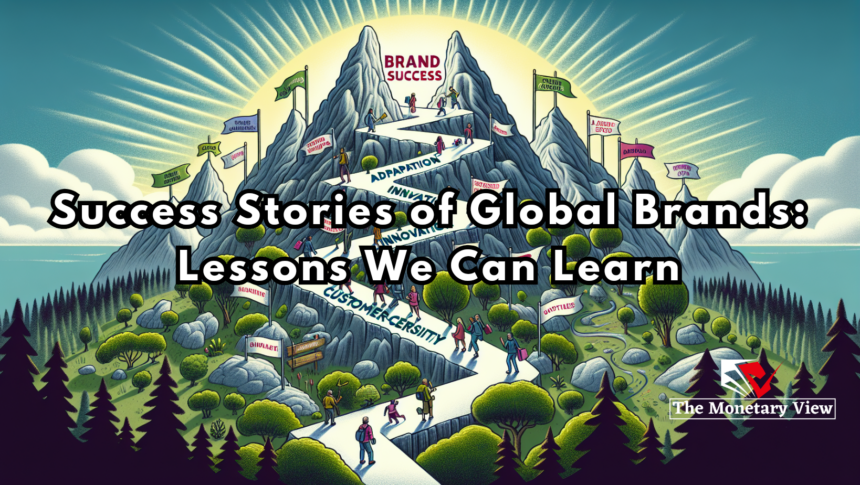Building a global brand is no small feat. It requires a combination of vision, strategy, adaptability, and an understanding of customer needs. Over the years, many brands have risen to international acclaim, setting benchmarks for success and innovation. In this article, we will explore the success stories of a few global brands and the lessons their journeys offer to businesses and entrepreneurs.
Apple: The Power of Innovation and Design
The Story: Founded in 1976, Apple began as a computer company. Over time, it transformed into a global technology leader, known for its groundbreaking products like the iPhone, iPad, and MacBook. Apple’s emphasis on sleek design, user-friendly interfaces, and cutting-edge technology has set it apart from competitors.
Lessons Learned:
- Innovate Continuously: Apple’s ability to disrupt markets with revolutionary products like the iPod and iPhone highlights the importance of staying ahead through innovation.
- Focus on User Experience: Simplicity and ease of use are at the core of Apple’s design philosophy, emphasizing the importance of prioritizing customer satisfaction.
- Build a Strong Ecosystem: Apple’s ecosystem of interconnected devices and services encourages brand loyalty and repeat purchases.
Coca-Cola: Mastering Brand Consistency
The Story: Coca-Cola, established in 1886, is one of the most recognized brands globally. Its consistent branding, timeless logo, and effective marketing campaigns have made it synonymous with happiness and refreshment.
Lessons Learned:
- Consistency is Key: Coca-Cola has maintained its core branding elements, such as the logo and iconic red-and-white color scheme, ensuring instant recognition worldwide.
- Emotional Connection: Campaigns like “Share a Coke” demonstrate how tapping into emotions can strengthen a brand’s connection with its audience.
- Global Adaptation: While maintaining its core identity, Coca-Cola tailors its marketing strategies to resonate with local cultures and preferences.
Nike: Inspiring Through Storytelling
The Story: Nike began in 1964 as Blue Ribbon Sports, selling athletic shoes. Today, it is a global powerhouse in sportswear, driven by its “Just Do It” slogan and partnerships with top athletes.
Lessons Learned:
- Compelling Storytelling: Nike’s campaigns inspire action and self-belief, appealing to athletes and non-athletes alike.
- Endorsements Matter: Collaborating with influential figures like Michael Jordan has elevated Nike’s brand status and credibility.
- Innovation in Products: Constantly introducing new technologies, such as Flyknit and Air cushioning, keeps Nike relevant and desirable.
Amazon: Customer-Centric Excellence
The Story: What started as an online bookstore in 1994 has become the world’s largest e-commerce platform. Amazon’s focus on convenience, competitive pricing, and fast delivery has revolutionized online shopping.
Lessons Learned:
- Customer Obsession: Amazon’s success stems from its relentless focus on customer satisfaction, evident in features like one-click ordering and Prime delivery.
- Diversification: Expanding into cloud computing (AWS), entertainment (Prime Video), and smart devices (Alexa) showcases the power of diversification.
- Operational Efficiency: Investing in logistics and technology ensures a seamless shopping experience for customers.
Starbucks: Creating a Lifestyle Brand
The Story: Starbucks began as a single coffee shop in Seattle in 1971 and is now a global chain known for its high-quality coffee and unique customer experience. The brand has redefined the concept of a coffeehouse as a “third place” between home and work.
Lessons Learned:
- Experience Over Product: Starbucks doesn’t just sell coffee; it offers an inviting atmosphere, personalized service, and a sense of community.
- Brand Differentiation: Premium pricing and quality help Starbucks position itself as a luxury coffee brand.
- Cultural Relevance: By adapting its menu to local tastes, Starbucks maintains relevance in diverse markets.
Key Takeaways for Businesses
From these success stories, several universal principles emerge that businesses can adopt:
- Customer Focus: Understanding and addressing customer needs is at the heart of every successful brand.
- Adaptability: The ability to evolve with market trends and consumer behavior is crucial for long-term success.
- Consistent Branding: A clear and consistent brand identity fosters recognition and trust.
- Emotional Appeal: Connecting with customers on an emotional level creates loyalty and advocacy.
- Innovation: Continuously innovating keeps a brand ahead of competitors and relevant to its audience.
Conclusion
The journeys of global brands like Apple, Coca-Cola, Nike, Amazon, and Starbucks demonstrate that success is not just about products but also about the experience, connection, and value a brand delivers. By learning from these brands’ strategies and adapting them to your context, you can build a brand that resonates with your audience and stands the test of time.







